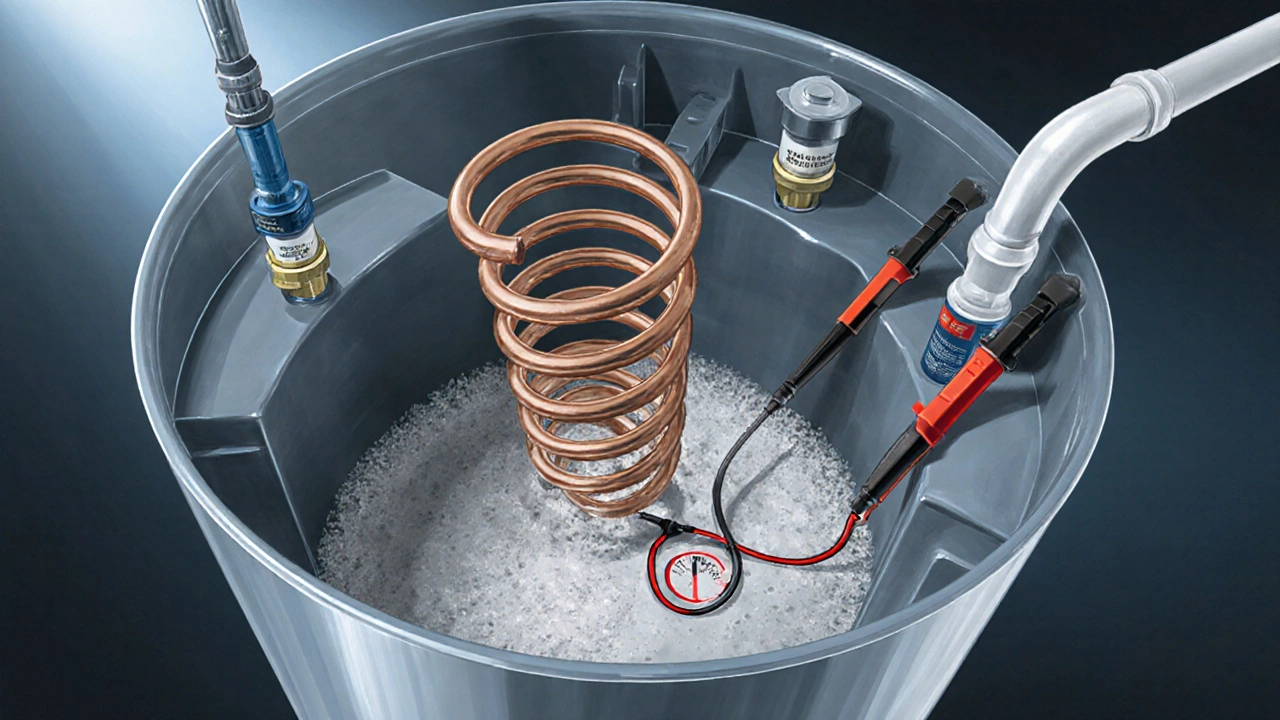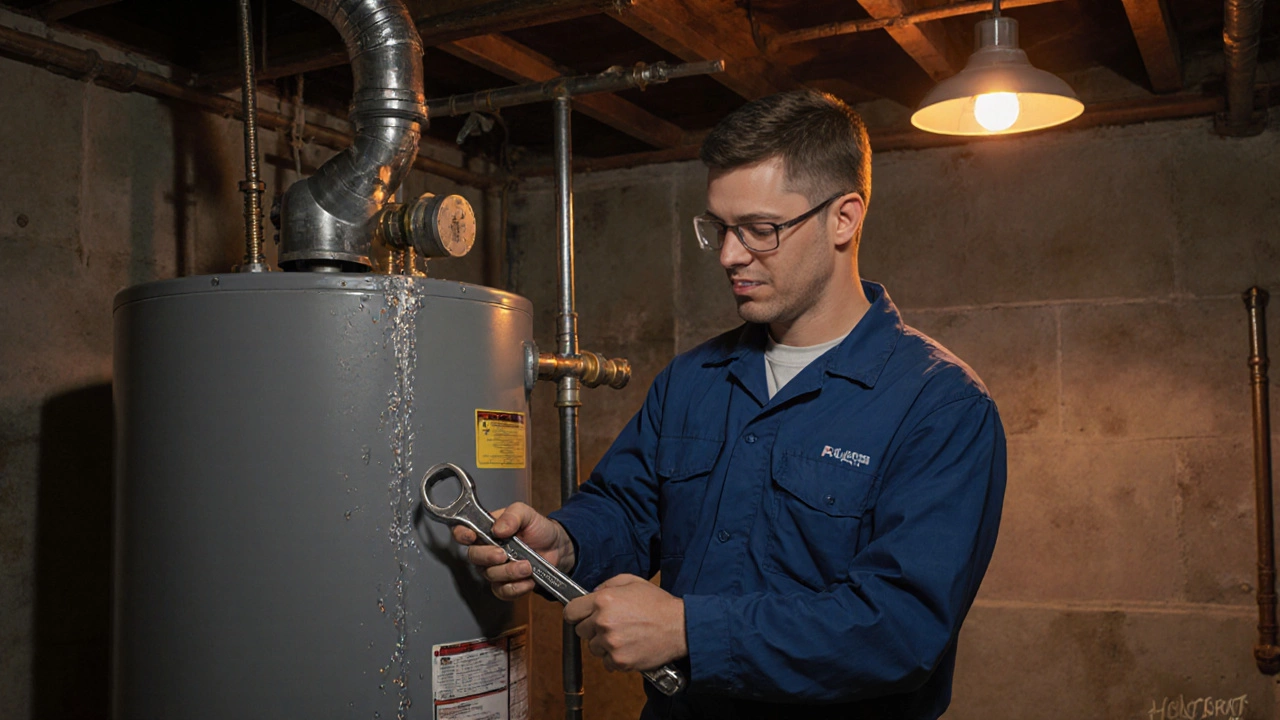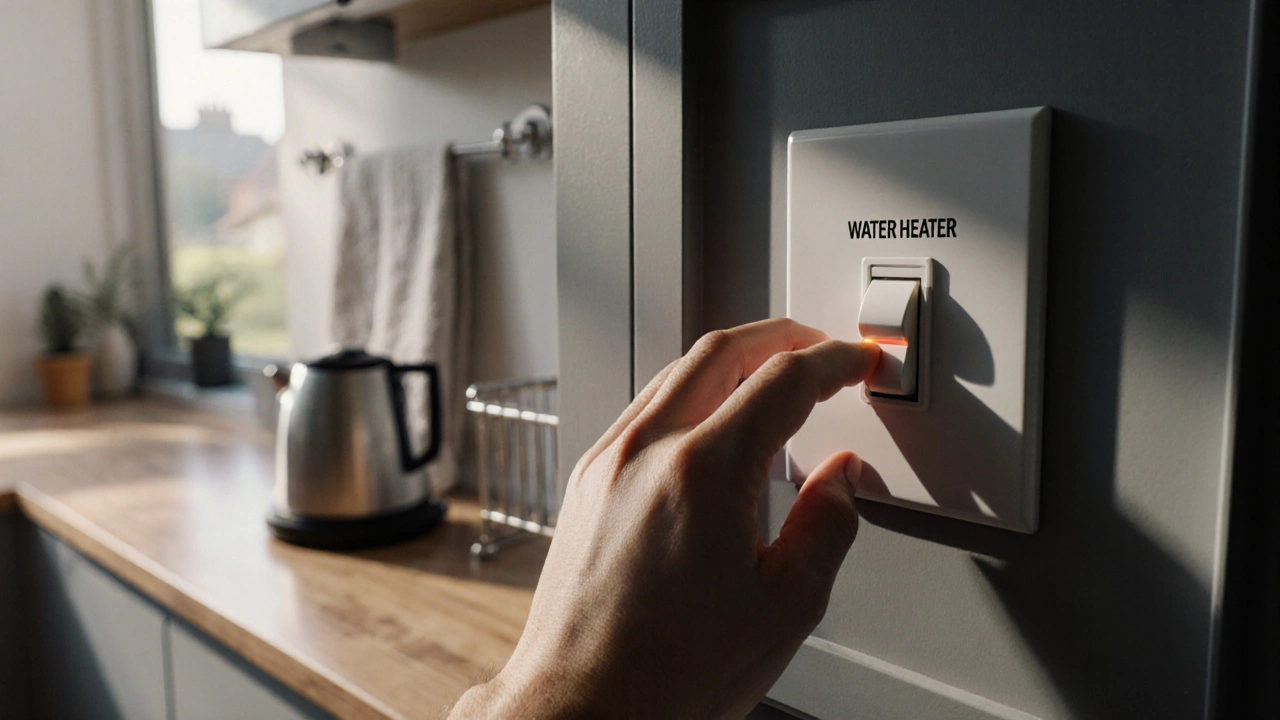Hot Water Troubleshooter
How to Use This Tool
Answer these questions about your water heater issue to identify the most likely cause and receive step-by-step guidance.
Note: This tool is for basic troubleshooting only. For complex issues, always consult a licensed professional.
Answer the questions above and click "Diagnose My Problem" to see potential causes and solutions.
Quick Takeaways
- Check the circuit breaker or fuse before opening the heater.
- Verify thermostat settings and look for a tripped safety valve.
- Inspect heating elements, gas valve, and flame sensor for faults.
- Clean out sediment if the tank is over a year old.
- Call a licensed plumber if you spot a leak, strange smells, or persistent errors.
When your hot water system is the appliance that heats and delivers hot water to taps and showers stops heating, the whole household feels the impact. You might be staring at a cold shower, wondering why the water that’s usually steaming hot has turned lukewarm-or vanished altogether. Below we walk through the most common culprits, how you can test each one, and when it’s time to call in a pro.
1. Power or Fuel Supply Issues
The first thing to verify is whether the heater is actually getting power (for electric units) or fuel (for gas units). A simple no hot water situation often traces back to a tripped circuit breaker a safety switch in the main panel that cuts electricity when overload occurs or a blown fuse.
- Locate your home’s electrical panel.
- Find the breaker labeled “Water Heater” or similar.
- If the switch is in the middle position, flip it fully off then on again.
- For older fuse boxes, replace any blown fuses with the same amperage.
If the breaker trips again immediately, you’re likely dealing with an internal short-stop using the heater and call a technician.
Gas‑fired heaters have a comparable fault point: the gas supply valve. Make sure the valve is fully open. If you smell gas, shut the valve, ventilate the area, and contact a licensed gas‑fitter right away.
2. Thermostat Settings and Faults
The thermostat tells the heater how hot the water should be. A mis‑set or failed thermostat a control device that regulates water temperature inside the tank can leave the tank cold.
- Locate the thermostat on the exterior of the tank-most units have a dial with “Low” and “High” markings.
- Set it to the manufacturer’s recommended temperature (usually around 120°F or 49°C).
- If the dial feels loose or the temperature doesn’t change after adjustment, the thermostat may be defective.
Some modern electric heaters have two thermostats (upper and lower). If one fails, the heater may only deliver lukewarm water. In that case, replacing the faulty thermostat is the usual fix.

3. Heating Elements (Electric) or Gas Valve & Flame Sensor (Gas)
Electric units rely on heating elements resistive coils inside the tank that convert electricity into heat. If an element burns out, the water stays cold.
- Turn off power at the breaker.
- Remove the access panel and locate the element(s).
- Use a multimeter set to “ohms” to test continuity; a reading of infinite resistance means the element is bad.
- Replace with an element that matches the tank’s voltage and wattage ratings.
For gas heaters, the key parts are the gas valve and the flame sensor a metal rod that detects the presence of a flame and signals the valve to stay open. A dirty or failed sensor can shut the burner off, cutting heating altogether.
- Turn off the gas supply.
- Locate the sensor (usually near the burner assembly).
- Clean it gently with fine‑grade sandpaper or steel wool.
- If cleaning doesn’t help, replace the sensor and test the unit.
4. Safety Devices: Pressure Relief Valve and Temperature‑Limit Switch
Both electric and gas heaters are equipped with a pressure relief valve a valve that releases excess pressure to prevent tank rupture. If this valve leaks or gets stuck open, hot water can drain out faster than the heater can keep up, giving the impression of no hot water.
- Lift the valve lever gently; you should hear a brief burst of water.
- If water continues to flow, the valve is faulty and must be replaced.
Some units also have a temperature‑limit switch that trips if the water gets too hot. Resetting it is usually as simple as flipping the switch back on, but repeated trips indicate an underlying issue (like a stuck thermostat).
5. Sediment Buildup and Tank Age
Hard water deposits “sediment buildup a layer of mineral particles that settles at the bottom of the tank” over time. When the heating element sits in that layer, its efficiency drops dramatically. In extreme cases, the element can overheat and fail.
Most manufacturers recommend flushing the tank once a year:
- Turn off power or gas and close the cold‑water inlet.
- Connect a garden hose to the drain valve at the tank’s base.
- Open the valve and let water run until it flows clear.
- Close the valve, remove the hose, reopen the inlet, and restore power/gas.
If the tank is older than 10‑12 years and you notice frequent rust, leaks, or a decline in hot‑water capacity, it may be time to replace the whole unit.
6. The Dip Tube and Cold‑Water Inlet
The dip tube a plastic pipe that sends incoming cold water to the bottom of the tank, allowing hot water to rise to the top can crack or deteriorate. When this happens, cold water mixes directly with the hot outlet, and you get lukewarm showers even though the heater is working.
Replacing a dip tube is inexpensive: turn off water supply, drain the tank partially, remove the cold‑water inlet, swap the old tube for a new one, and re‑assemble.

7. When to Call a Professional
While many of the checks above are DIY‑friendly, certain signs mean you should stop and call a licensed plumber or heating specialist:
- Persistent tripping of the circuit breaker or gas valve.
- Smell of gas, sputtering burners, or yellow flame.
- Water leaking from the tank, especially at the bottom.
- Corrosion or rust on the tank exterior.
- Frequent loss of hot water despite a recent flush.
Professional technicians have the tools to test internal wiring, pressure gauges, and combustion efficiency safely.
8. Electric vs. Gas Water Heaters: Quick Comparison
| Factor | Electric Heater | Gas Heater |
|---|---|---|
| Installation Cost | Lower - no gas line needed | Higher - requires gas piping and venting |
| Operating Cost | Higher where electricity rates > $0.30/kWh | Generally lower if natural gas is cheap |
| Recovery Time | Slower - element heats water gradually | Faster - burner heats water quickly |
| Space Requirements | Compact - can be mounted vertically | Larger - needs clearance for vent |
| Maintenance | Simple - flush annually | More components - burners, pilot, vent cleaning |
| Best For | Small homes, apartments, electric‑only properties | Large families, high demand, homes with gas service |
9. Troubleshooting Checklist
- ✔ Verify breaker/fuse is ON.
- ✔ Confirm gas valve open (if applicable).
- ✔ Set thermostat to 120°F (49°C).
- ✔ Test heating element or flame sensor.
- ✔ Inspect pressure relief valve for leaks.
- ✔ Flush tank to remove sediment.
- ✔ Check dip tube for cracks.
- ✔ If any step fails, contact a licensed repair service.
Frequently Asked Questions
Why does my water heater make a popping sound?
A popping noise often means sediment is trapped under the heating element. When the element heats the sediment, steam bubbles burst, creating the sound. Flushing the tank usually solves it.
Can I replace a heating element myself?
Yes, if you’re comfortable working with electricity. Turn off the breaker, drain the tank, unscrew the element, test it with a multimeter, and install a matching replacement. Always replace both elements if one fails.
What does a constantly tripping breaker indicate?
It usually points to an internal short in the heater, a faulty thermostat, or a defective heating element drawing too much current. Stop using the unit and have a professional diagnose the exact cause.
How often should I flush my water heater?
At least once a year if you have hard water, and every six months in very mineral‑rich areas. Regular flushing extends the heater’s life and keeps heating efficiency high.
Is a leaking pressure relief valve dangerous?
A leaking valve can cause water damage and indicates the tank may be over‑pressurized. Replace the valve immediately and have the tank inspected for corrosion.


